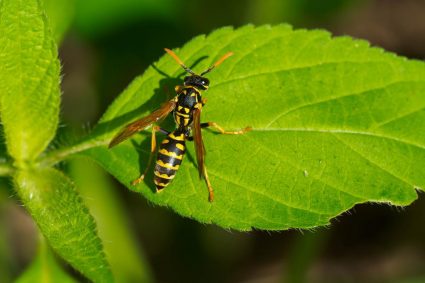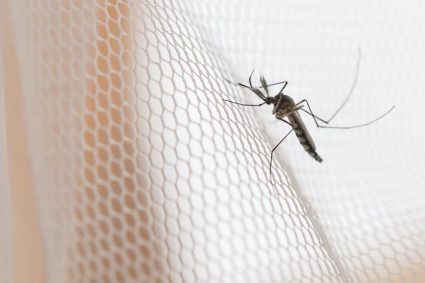
Rabbits are adorable creatures that many of us enjoy seeing hopping around in the wild. However, when a rabbit finds its way into your home, it can cause a whole host of problems. From chewing on wires and furniture to leaving droppings around your house, a rogue rabbit can be a real headache. In this comprehensive guide, we’ll explore how to get a rabbit out of your house safely and humanely, how to clean up after it, and how to prevent future invasions.
To get a rabbit out of your house, close all doors and windows, remove any hazards, and create a makeshift enclosure to corner the rabbit. Approach the rabbit slowly and calmly, then use a large box, laundry basket, or net to capture it. Once captured, hold it securely against your chest while still inside the box or net, then transfer the rabbit to a secure carrier or enclosure. After removing the rabbit, clean and sanitize the area, and take preventative measures to avoid future invasions.
Identifying a Rabbit in Your House
Before you can remove a rabbit from your house, you need to be sure there is one present. Look for the following signs:
- Rabbit droppings: These are small, round, and hard pellets that are usually brownish in color.
- Rabbit behavior: Rabbits may hide, run away, or display signs of stress or anxiety.
- Rabbit noises: Rabbits can make various noises, such as thumping, grunting, or growling.
- Rabbit tracks: Small, recognizable rabbit tracks in soft soil or dust around your house are a clear sign of a rabbit’s presence.
- Rabbit damage: Rabbits may chew on furniture, wires, or plants in your house.
- Territorial markings: Rabbits may scatter their droppings or spray urine to mark their territory.
Steps to Remove a Rabbit from Your House
Once you’ve identified the presence of a rabbit in your house, follow these steps to remove it:
- Close all doors and windows to prevent the rabbit from escaping to other parts of the house or outside.
- Remove any hazards or items that could harm the rabbit, such as electrical cords or toxic substances.
- Create a makeshift enclosure using exercise pen enclosures or other tall and wide barriers. This will help you corner the rabbit in a specific area.
- Approach the rabbit slowly and calmly, speaking gently to avoid scaring it. Try to get down to the rabbit’s level to appear less threatening.
- Use a large box, laundry basket, or a net to capture the rabbit. Gently place the box or basket over the rabbit, trapping it inside.
- Once the rabbit is captured, hold it securely against your chest while still inside the box or net to minimize stress.
- Transfer the rabbit to a secure carrier or enclosure.
Remember that catching a rabbit may take several attempts, so be patient and persistent. If you’re unable to catch the rabbit on your own, consider contacting a local animal rescue or control organization for assistance. The cost of professional wildlife removal services can range from $50 to $250 per hour, with a one-time intervention typically costing between $255 to $600.
Cleaning and Sanitizing the Area
After successfully removing the rabbit from your house, it’s essential to clean and sanitize the area to prevent the spread of diseases and parasites. Here’s how to do it:
- Remove any visible debris, such as rabbit feces, by using a dustpan or by double-bagging it in plastic bags and disinfecting the outer bag with a disinfectant solution.
- Prepare a disinfectant solution by mixing ½ cup of 6% or 8.25% sodium hypochlorite bleach concentrate with one gallon of potable water. Alternatively, you can use a 1:1 solution of white vinegar and water.
- Wear protective gloves, eye protection, and work in a well-ventilated area when handling the bleach or bleach solution.
- Clean the surfaces with the disinfectant solution, making sure to thoroughly wet all potentially contaminated surfaces, such as floors, walls, and any rabbit equipment.
- Rinse the surfaces with water, especially if you used bleach, to remove any residue.
- Allow the area to air dry before reintroducing any rabbits or other animals.
Preventing Future Rabbit Invasions
Now that you’ve successfully removed the rabbit and cleaned your house, it’s time to take preventative measures to ensure a rabbit doesn’t enter your house again:
- Install fencing: Set up a fence around your property or garden with a height of at least 3-4 feet. Make sure the fence is secured at the bottom to prevent rabbits from crawling under it.
- Use rabbit repellents: Spray rabbit repellent sprays periodically around your home or garden. Choose sprays that don’t wash off easily, so you don’t have to reapply after every rain.
- Remove hiding spots: Rabbits tend to hide in tall grass, brush piles, and other debris. Keep your yard tidy by trimming back landscaping, raking up piles of leaves, and removing brush piles.
- Plant rabbit-deterring plants: Plant strong-smelling plants like onions, garlic, marigold, oregano, basil, and rhubarb around the border of your garden or property to deter rabbits.
By following these comprehensive steps, you can effectively and humanely remove a rabbit from your house, clean up after it, and prevent future invasions. Remember, dealing with wildlife should always be done with care and respect for the animals involved.
Frequently Asked Questions
What should I do if the rabbit appears injured?
If the rabbit appears injured, it’s best not to attempt to capture it yourself. Instead, contact a local wildlife rehabilitation center or animal control for assistance. They have the training and equipment needed to handle injured wildlife safely.
Can I keep a wild rabbit as a pet if it enters my house?
It’s generally not recommended to keep a wild rabbit as a pet. Wild rabbits are not domesticated and may not adapt well to life in captivity. They can also carry diseases that can be transmitted to humans and other pets. It’s best to remove the rabbit from your house and let it return to its natural habitat.
What should I do if I find baby rabbits in my house or yard?
If you find baby rabbits in your house or yard, it’s best to leave them alone. Their mother is likely nearby and will return to care for them. If the nest appears abandoned for more than 24 hours, contact a local wildlife rehabilitation center for advice.
What diseases can rabbits carry?
Rabbits can carry a variety of diseases that can be transmitted to humans, including tularemia, rabbit fever, and ringworm. They can also carry parasites like fleas, ticks, and mites. This is why it’s important to clean and sanitize any areas where a rabbit has been.
What should I do if my pet rabbit escapes into the house?
If your pet rabbit escapes into your house, try to stay calm and follow the same steps outlined in this guide. Remember to approach your rabbit slowly and gently to avoid causing stress. If you’re unable to recapture your rabbit, contact your local animal control or a professional pet catcher for assistance.











